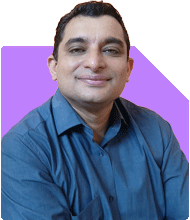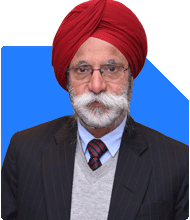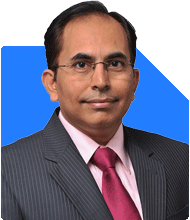60-Year-Old Asks: How Long Should I Invest 1 Lakh in MF for Stable Income?
Ramalingam Kalirajan |10901 Answers |Ask -Follow
Mutual Funds, Financial Planning Expert - Answered on Jul 23, 2024
He has an MBA in finance from the University of Madras and is a certified financial planner.
He is the director and chief financial planner at Holistic Investment, a Chennai-based firm that offers financial planning and wealth management advice.... more

I am 60 years old. I have a SIP account of 2000 rs. Which i put every month. If i put 1 lakh as fixed. For how long i need to keep it in MF. And how much income will i get.
Lump Sum Investment
You have Rs 1 lakh for a fixed investment. This is a strong move towards securing your financial future.
Investment Duration
To determine the duration, consider your financial goals. If you aim for retirement, a longer period is beneficial.
5 Years: Moderate returns, suitable for short-term goals.
10 Years: Higher returns, good for medium-term goals.
15 Years or More: Maximum returns, ideal for long-term goals like retirement.
Expected Returns
Mutual funds can offer varying returns. Historical data suggests:
Equity Funds: 10-15% per annum.
Debt Funds: 6-8% per annum.
Hybrid Funds: 8-12% per annum.
Assessing Risk
Understanding your risk tolerance is crucial.
Low Risk: Debt funds are stable and safer.
Moderate Risk: Hybrid funds balance equity and debt.
High Risk: Equity funds offer higher returns but are volatile.
Diversification
Diversifying your investment reduces risk.
Equity Funds: Invest in multiple sectors.
Debt Funds: Choose a mix of short-term and long-term bonds.
Hybrid Funds: Combine both equity and debt.
Inflation and Tax Considerations
Inflation impacts your returns. Equity funds generally outpace inflation.
Equity Funds: Taxed at 10% after one year.
Debt Funds: Taxed based on your income slab if held for less than three years. After three years, taxed at 20% with indexation benefits.
Hybrid Funds: Tax treatment varies based on equity and debt proportion.
Regular Monitoring
Regularly review your investments. Adjust your portfolio based on market conditions and personal goals.
Professional Guidance
A Certified Financial Planner can offer personalized advice. They help in aligning your investments with your financial goals.
Final Insights
Investing Rs 2000 monthly in SIPs and Rs 1 lakh in mutual funds is wise.
Stay Invested: Longer durations yield better returns.
Diversify: Spread your investments across different funds.
Monitor: Regularly check your investments and adjust as needed.
Seek Guidance: A Certified Financial Planner can provide tailored advice.
Invest wisely to secure your future.
Best Regards,
K. Ramalingam, MBA, CFP
Chief Financial Planner
www.holisticinvestment.in
You may like to see similar questions and answers below
Ramalingam Kalirajan |10901 Answers |Ask -Follow
Mutual Funds, Financial Planning Expert - Answered on May 14, 2024
Ramalingam Kalirajan |10901 Answers |Ask -Follow
Mutual Funds, Financial Planning Expert - Answered on May 18, 2024
Ramalingam Kalirajan |10901 Answers |Ask -Follow
Mutual Funds, Financial Planning Expert - Answered on Jul 25, 2024
Milind Vadjikar | Answer |Ask -Follow
Insurance, Stocks, MF, PF Expert - Answered on Oct 09, 2024
Ramalingam Kalirajan |10901 Answers |Ask -Follow
Mutual Funds, Financial Planning Expert - Answered on Jul 04, 2025
Dr Shakeeb Ahmed Khan |184 Answers |Ask -Follow
Physiotherapist - Answered on Dec 17, 2025
T S Khurana |538 Answers |Ask -Follow
Tax Expert - Answered on Dec 17, 2025
T S Khurana |538 Answers |Ask -Follow
Tax Expert - Answered on Dec 17, 2025
Janak Patel |72 Answers |Ask -Follow
MF, PF Expert - Answered on Dec 17, 2025
Ramalingam Kalirajan |10901 Answers |Ask -Follow
Mutual Funds, Financial Planning Expert - Answered on Dec 17, 2025
Samraat Jadhav |2511 Answers |Ask -Follow
Stock Market Expert - Answered on Dec 17, 2025
Ravi Mittal |678 Answers |Ask -Follow
Dating, Relationships Expert - Answered on Dec 17, 2025
Reetika Sharma |429 Answers |Ask -Follow
Financial Planner, MF and Insurance Expert - Answered on Dec 17, 2025
Purshotam Lal |68 Answers |Ask -Follow
Financial Planner, MF and Insurance Expert - Answered on Dec 17, 2025
Ramalingam Kalirajan |10901 Answers |Ask -Follow
Mutual Funds, Financial Planning Expert - Answered on Dec 17, 2025





























